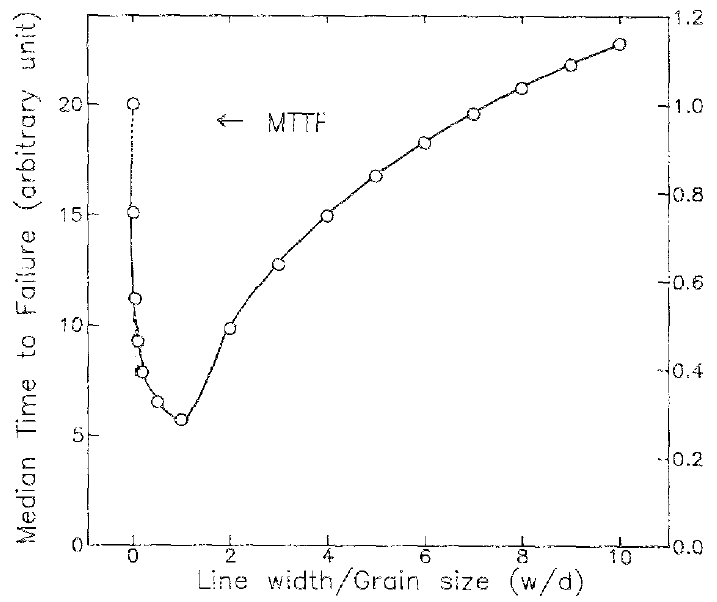=================================================================================
In the grain boundary diffusion mechanism of electromigration, the electromigration process is retarded if the grain sizes are too small. For instance, the increased time to failure of Al-4 wt. % Cu alloy over pure Al in electromigration [1] can be explained by the difference of grain growth rates. In Al-4 wt. % Cu alloy, the grains are initially small and thus the ions remain essentially immobile to migration, resulting in enhanced component life.
The failure distribution function for the lines, Gsp(t), can be given by [2],
 ---------------------- [2894a] ---------------------- [2894a]
where,
Np -- The number (=w/d) of parallel units,
Ns -- The number of units which is approximately equal to the line length divided by the grain size, l/d.
 ---------------------- [2894b] ---------------------- [2894b]
f(z) is described and given on page 2887.
When the grain size is less than the linewidth, multiple failure units across the width of the line can occur at a failure site because w/d > 1.
Figure 2894 shows the calculated MTTF as a function of the ratio of the line width and the grain size. As the ratio of the linewidth to the grain size decreases, MTTF decreases to a minimum and then increases exponentially.

Figure 2894. The calculated MTTF as a function of the ratio of the line width and the grain size. Adapted from [2]
[1] William C. Mcbee, and John A. Mccomb, Grain Growth in Thin Aluminum-4% Copper Alloy Films, Thin Solid Films, 30 (1975) 137-143.
[2] Cho, J. and Thompson, C. V., Grain size dependence of electromigration-induced failures in narrow interconnects, 54(25), 2577 (1989).
|
